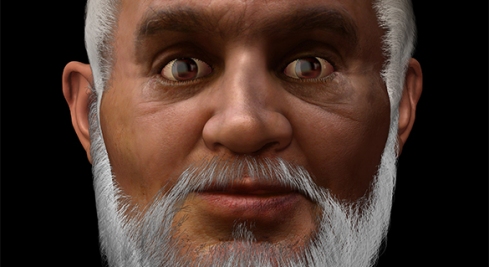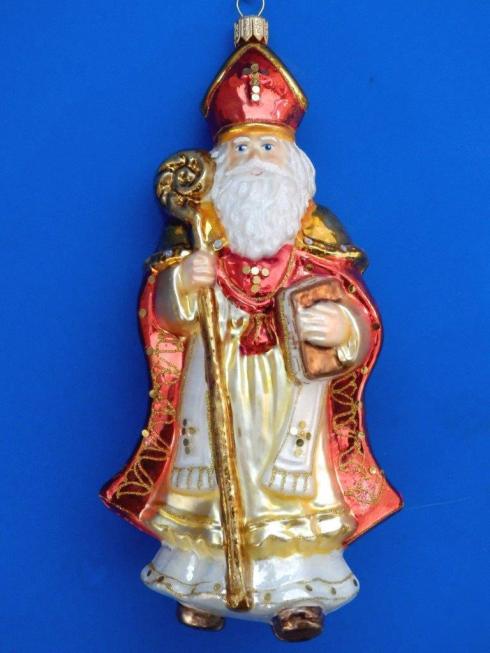Recently, I came across an internet page written by Doctor of Theology Terry Watkins. He explains, in no uncertain terms, that Santa is actually a representative of Satan and that having anything to do with him is intrinsically evil:
Santa Claus, The Great Impostor
Children think they are associating with a jolly old man with a good heart but, according to Watkins, “there [is] something or someone else hiding behind jolly ol’ St. Nick”. Interestingly, while this page eventually acknowledges that Santa, otherwise known as Saint Nicholas, was an actual historical figure to whom many miraculous acts and the origin of the Santa stories have been attributed, Watkins quickly dismisses this by claiming that there probably never was such a person. At this point, I am forced to remind Dr. Watkins that the very same kinds of arguments have been used to show that Jesus was not a historical figure. Interestingly, while we have absolutely no reliable relics to prove that Jesus lived, we have a hand-written transcript and the actual bones of Saint Nicholas. Since these bones were separated at one time into two lots and the lots have been compared to confirm that they are from the same man, they are even more compelling evidence that the man actually lived and that these are his actual bones.
The original Saint Nicholas was a broad dark-skinned man about 5 feet tall. As was the fashion for men in his station, he probably had a full white beard. If you were to put him in a modern Santa suit, he would probably look very much like the modern notion of Santa Claus. He had somewhat darker skin than most Caucasians tend to visualize, but skin color is relative; and to people of his time, he would have appeared to be your typical broad, jolly, white-bearded old man. By analyzing his bones, scientists have reconstructed his face:

Nicholas is most often depicted as wearing the robes of a catholic bishop, and if you Google his image, you are met with a sea of red. I am somewhat skeptical as to whether a bishop of his nature living at that time actually had such elaborate garments, but I could be mistaken:

The stories of Nicholas and the miracles he performed are diverse. However, he is most fondly remembered as a giver of gifts who famously dropped a bag of money down the chimney of a dower-less girl so that she could be married. The money bag landed in her recently washed stocking, thus giving rise to the stories about Santa leaving gifts in stockings. Of all the stories attributed to Saint Nicholas, this one is considered to be among the most likely to have some historical basis. Note that Santa preferred to give in secret, though he was occasionally revealed by accident.
If any of the stories about Nicholas are true, he was undoubtedly a good man who believed in the spirit of giving. He was certainly a Christian who believed in salvation through the blood of Christ. He was one of the bishops who signed the Nicene Creed. Due to the miracles attributed to him, he is officially recognized as a saint by most Christian denominations.
Something of which many non-Catholics and most non-Christians are unaware is that Catholics believe in the intercession of saints. In other words, they believe that it is proper to make prayers to saints in the hope that they will intercede on one’s behalf to invoke God’s favor. Many people, to this day, pray to Saint Nicholas for such intercession.
So, now I am going to play the same “what is really going on” game that Dr. Watkins plays. Children write letters to Santa. However, if his place as a traditional Saint is properly understood, these letters may be considered as prayers to a saint for intercession. Parents, who are aware of the contents of these letters, can be seen as acting on behalf of the Saint. They may believe they are acting on their own behalf for their children, but as every Christian knows, all good emanates from God. Thus, from a purely theological standpoint, this can all be seen as a very holy act of formal written prayer followed by the Saint ostensibly interceding through the parents to bring about a positive response from God.
Do saints actually exist in the sense that some religions believe and do they actually intercede? Is this interpretation of what is taking place endorsed by God?
Assuming that Jesus actually existed and actually said the things that are printed in the Bible, he is quoted as saying, “Beware of false prophets, which come to you in sheep’s clothing, but inwardly they are ravening wolves. Ye shall know them by their fruits. Do men gather grapes of thorns, or figs of thistles? Even so every good tree bringeth forth good fruit; but a corrupt tree bringeth forth evil fruit. A good tree cannot bring forth evil fruit, neither can a corrupt tree bring forth good fruit. Every tree that bringeth not forth good fruit is hewn down, and cast into the fire. Wherefore by their fruits ye shall know them.” Unless Jesus was a fool or nonexistent, there is no mistaking his meaning. So let us take a look at the fruits that Santa has borne.
Many stories are associated with Santa. Some, such as the Rankin/Bass “Santa Claus Is Comin’ to Town” swing wide of the historical mark. In the Rankin/Bass version, Santa is portrayed as an orphan abandoned to a bunch of elf toymakers and raised by the elves. Some, such as the more recent Tim Allen movies, completely replace him with human stand-ins. However, nearly all of these accounts have certain elements in common. They portray faith and generosity as powerful forces that can overcome adversity. They demonstrate that giving is more important than receiving. They emphasize truth, love and loyalty. One of the most common themes of such stories is that asking Santa for meaningful gifts such as healing a friend or rescuing a relative from desperation has greater power than asking him for expensive toys. If the concept of Santa Claus is to be judged from its fruits, I would have to say that it has borne positive fruit.
Naturally, I am taken aback by implications in some accounts that Christmas is overly dependent on Santa. In the Larry Roemer “Rudolph the Red-Nosed Reindeer”, Santa suggests that Christmas might have to be cancelled if he cannot make his rounds. However, there are just as many accounts to the contrary. In the Dr Seuss poem, “How the Grinch Stole Christmas”, the clearer lesson is that Christmas will come without Santa’s gifts and that it has a much higher meaning. Even the stories that suggest that the meaning of Christmas is closely tied to Santa have plenty of other strong spiritual messages.
Is Santa real? Does he actually intercede on our behalf?
If you are a Christian and do not wholly reject the concept of the intercession of Saints, it is very reasonable to believe that he is and does. Personally, I like to think that God is OK with other spiritual beings acting on his behalf as long as they do not take all the credit. If he is not, then we are all fools whenever we do a good deed.
I choose to believe that Santa is real. Like all real things, he is not quite like we typically imagine him. However, we are used to that. Most of us realize that nothing in the real world is as simple or straight-forward as our visualizations. Atoms are nothing like little solar systems, and the solar system does not have little rings showing the paths of planets that are close enough together to be seen in a single view. Similarly, Saint Nicholas may not operate in quite the fashion that children are presented with. However, if Nicholas really is with us, he really does listen to our prayers, and he really does intercede on our behalf, I like to believe that he is pleased with the depictions of him as a wise and jolly old elf that rides in a sleigh drawn by eight tiny reindeer. Possibly, he even had a hand in their invention. If nothing else, it obscures him as the intermediary of giving which, if the legends are correct, he would greatly prefer.
Maybe, sometimes, the jolly old saint manifests in the form of the man in red just to satisfy naïve believers. Like all miraculous spiritual phenomena, his manifestations in this form would be fleeting and subjective…possibly even illusory. Such is the way of the spiritual world. Such is the way of Santa Claus.